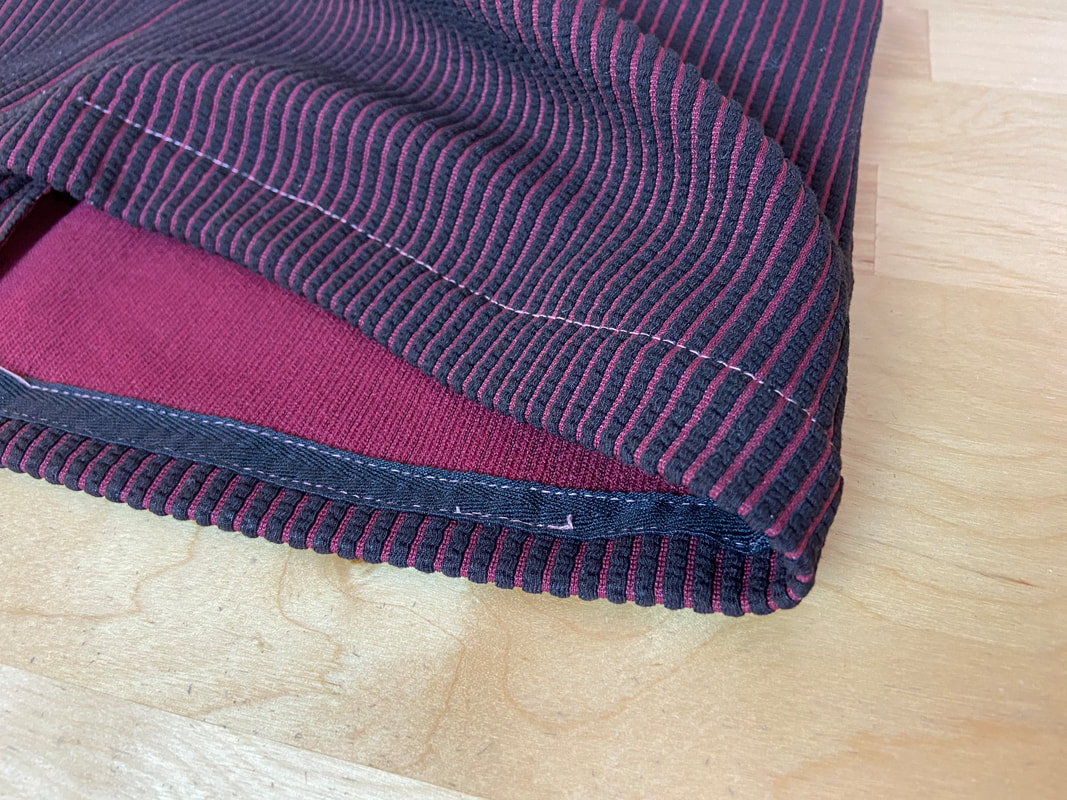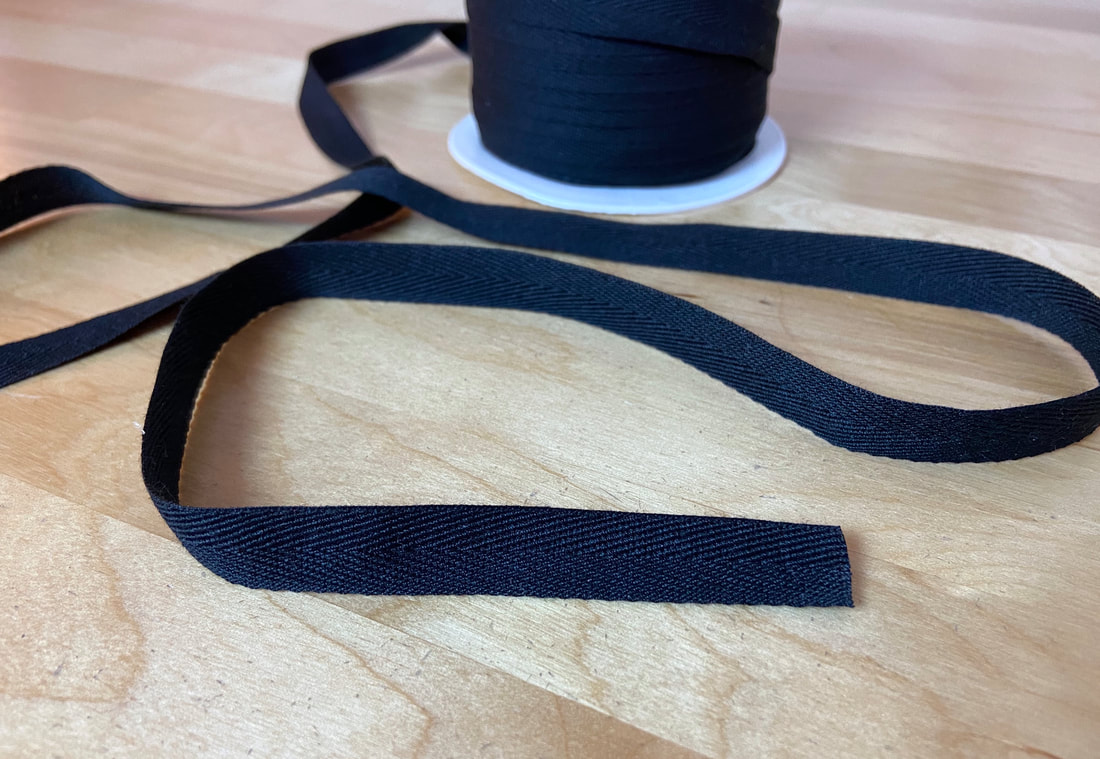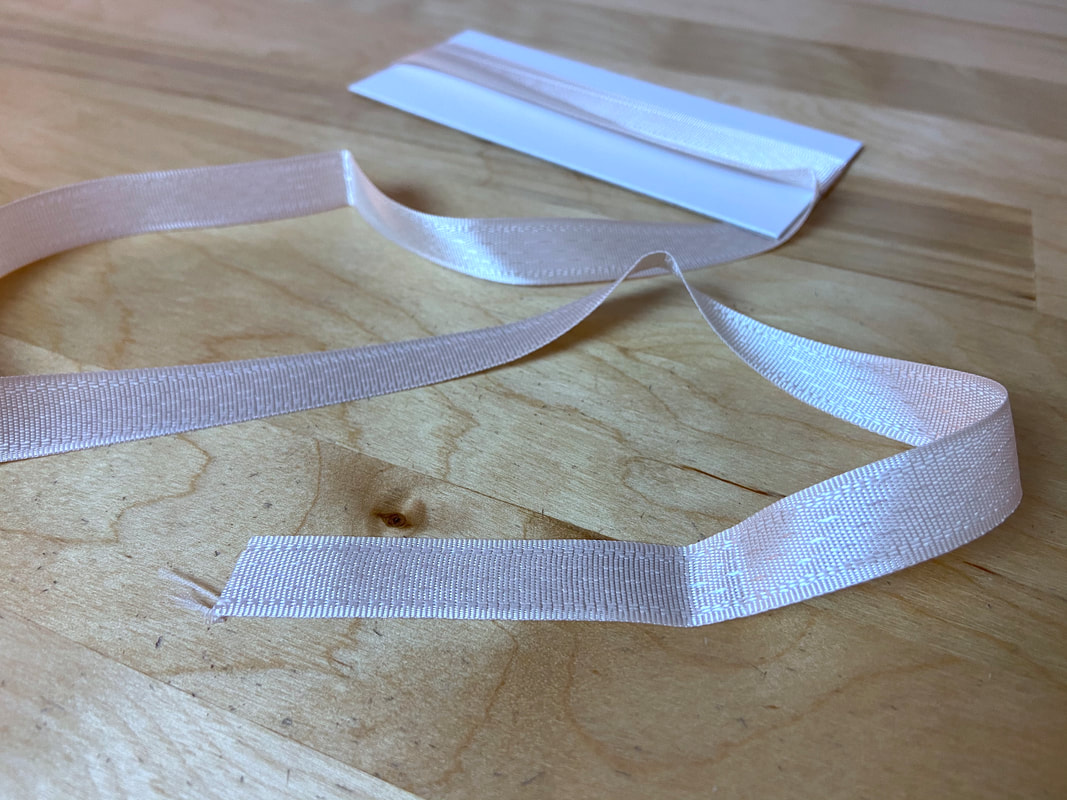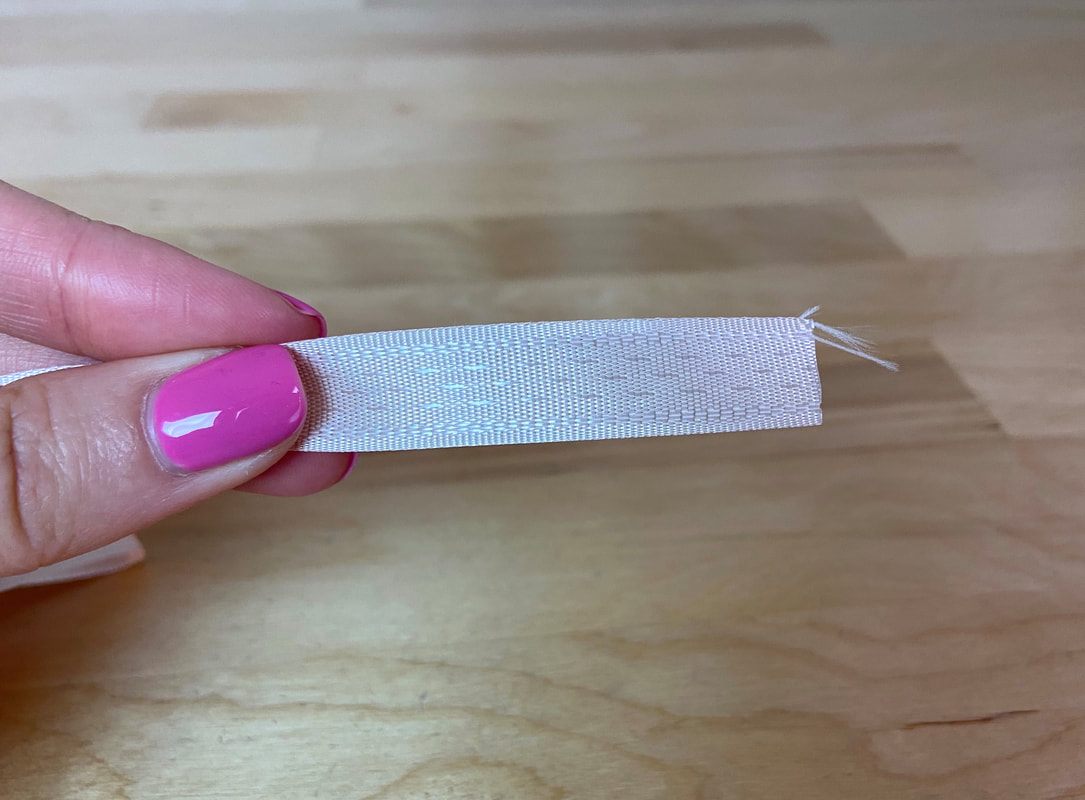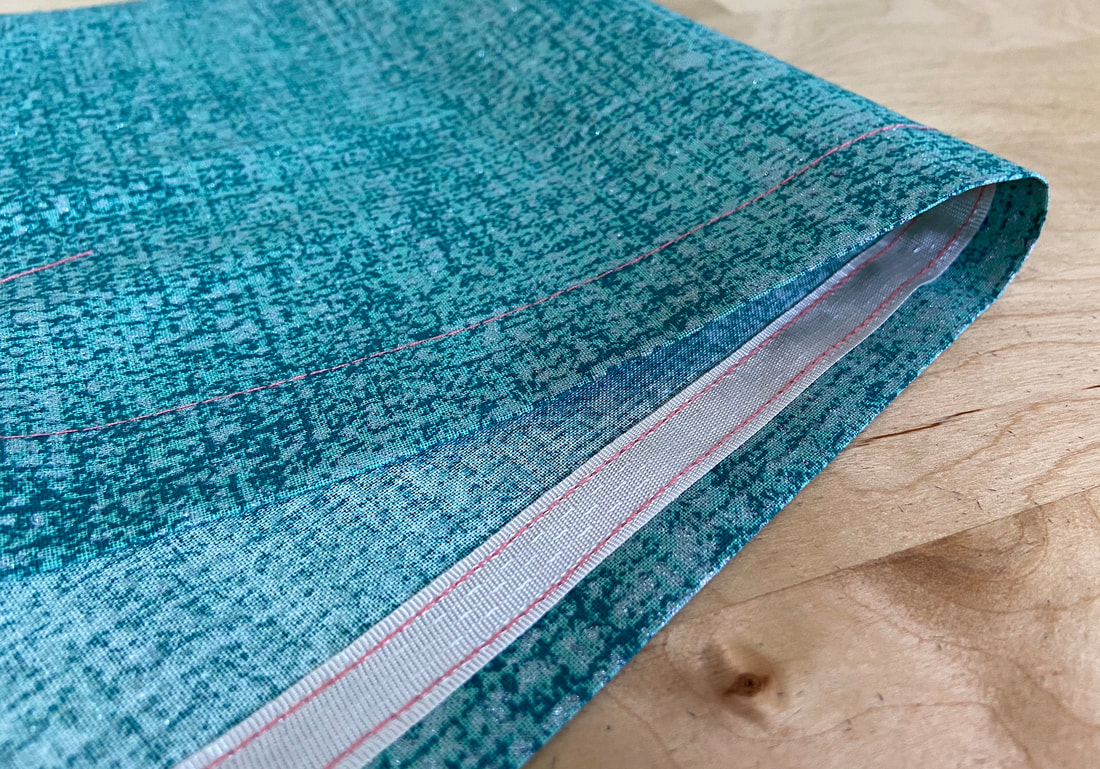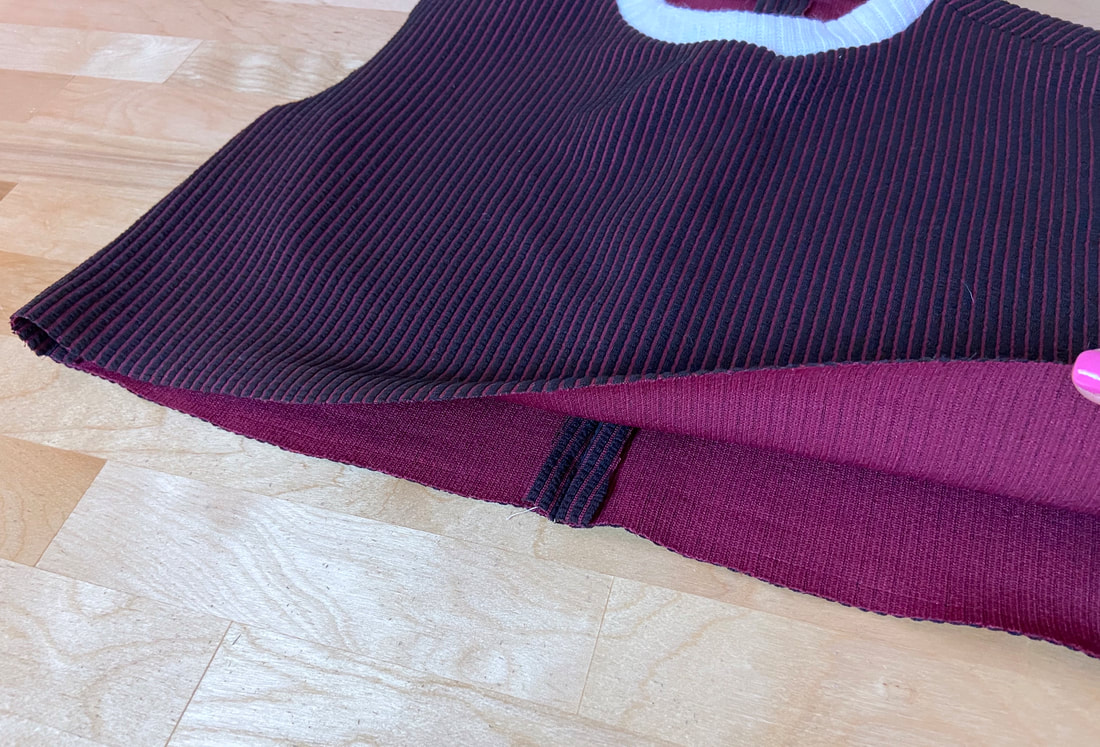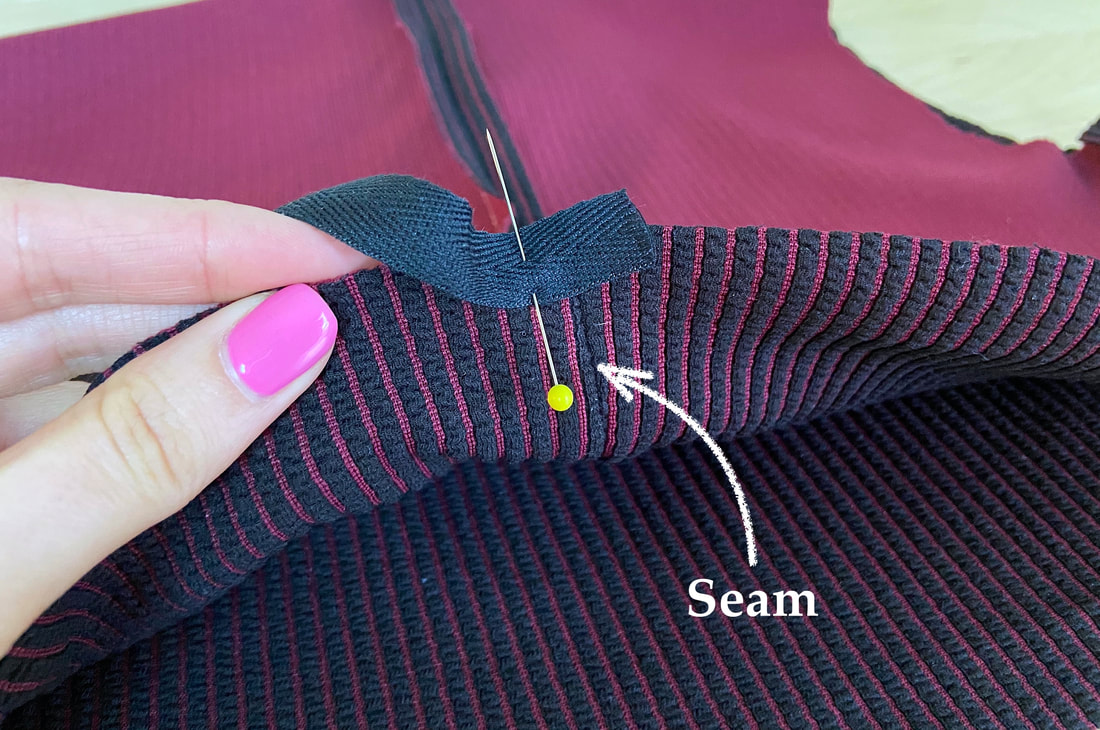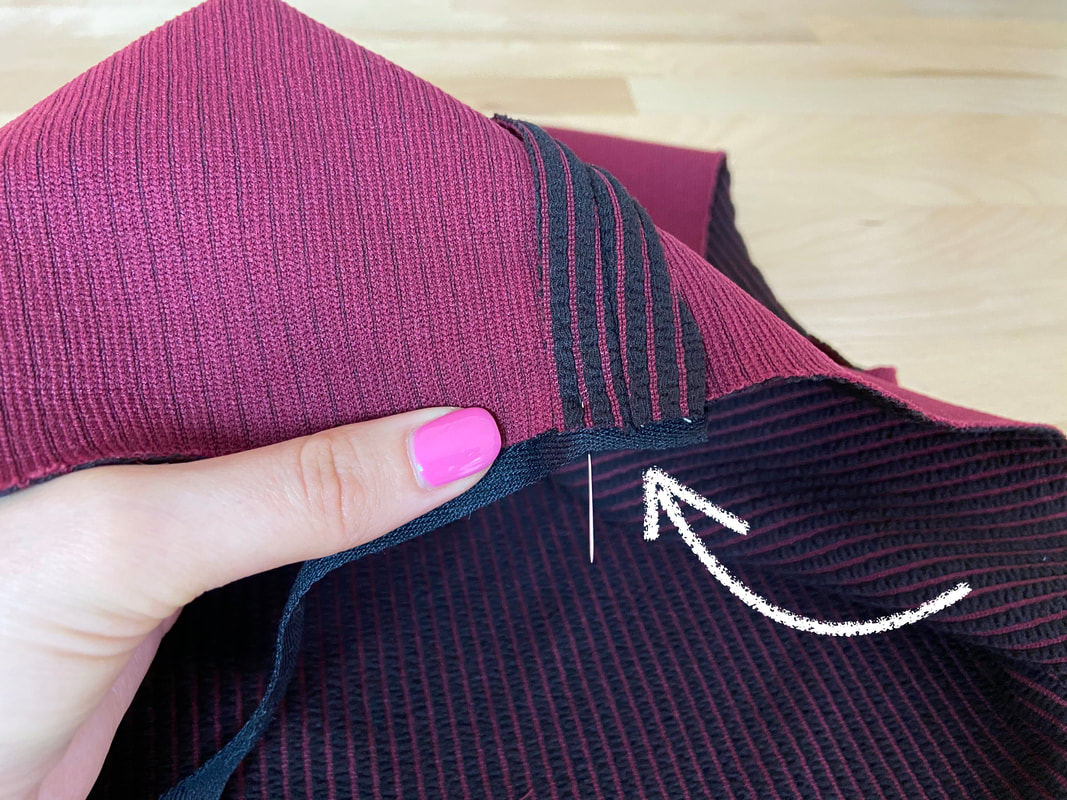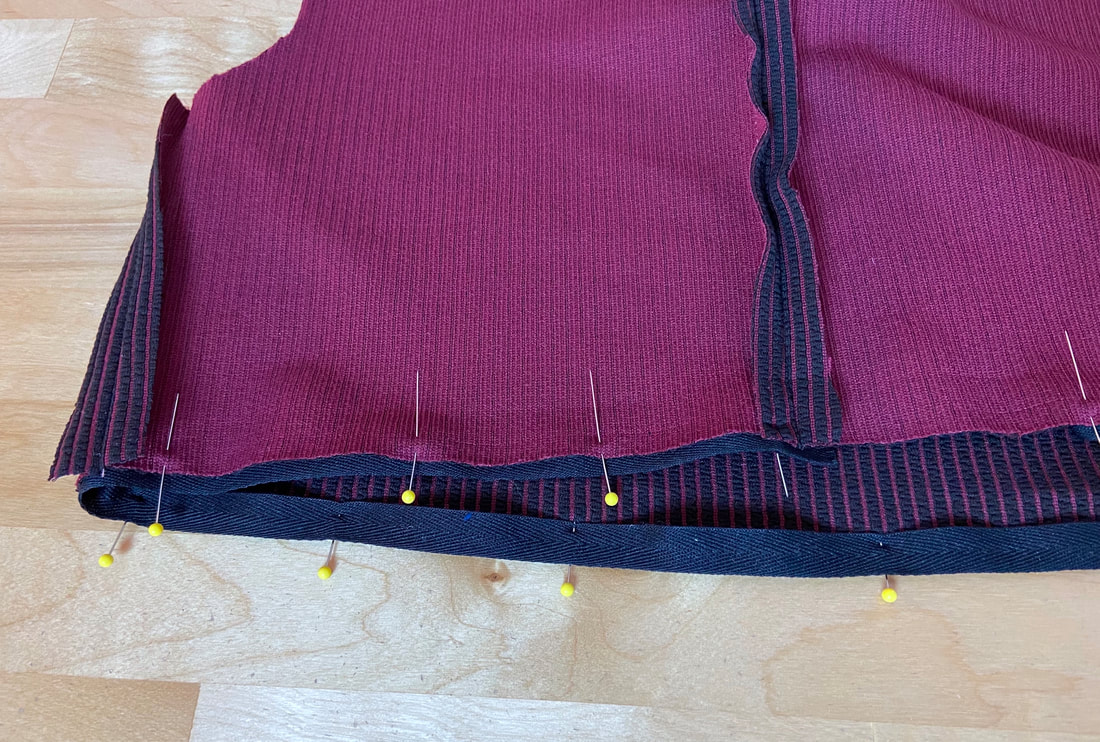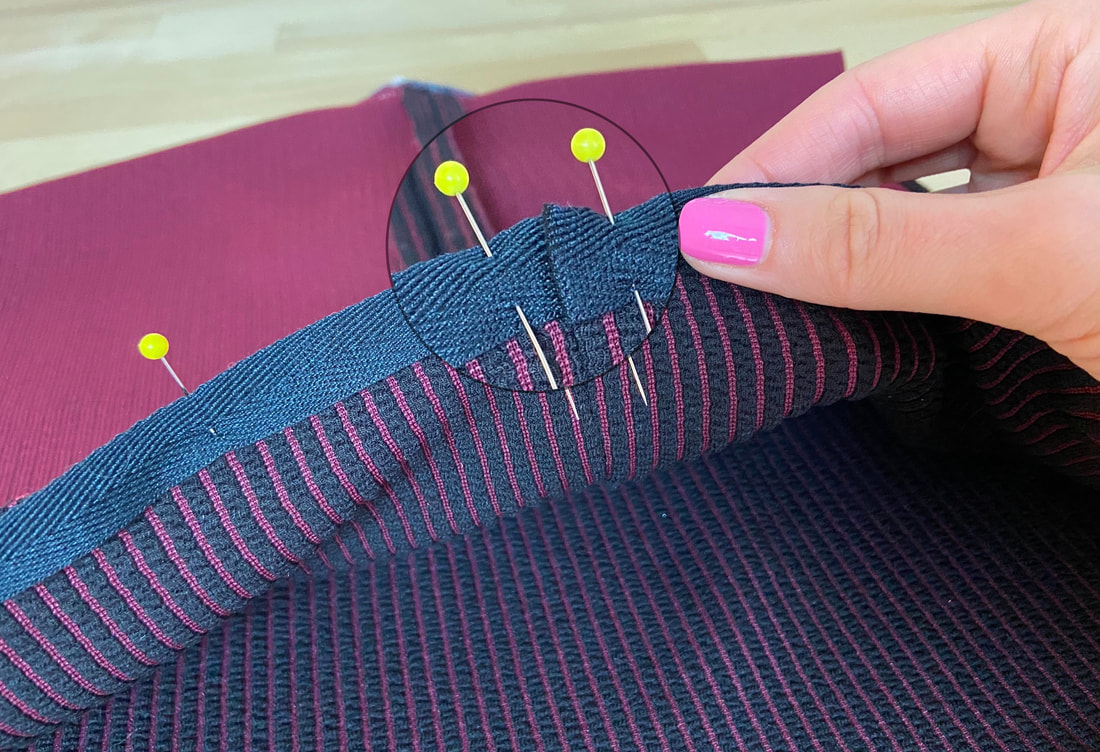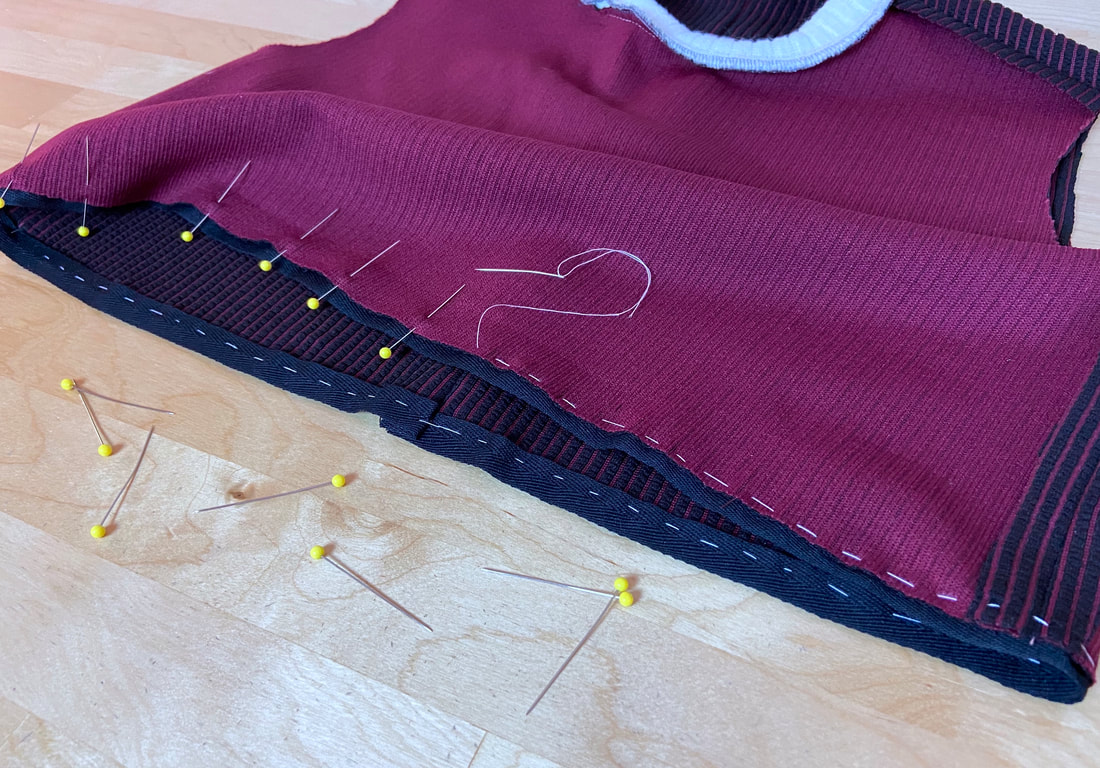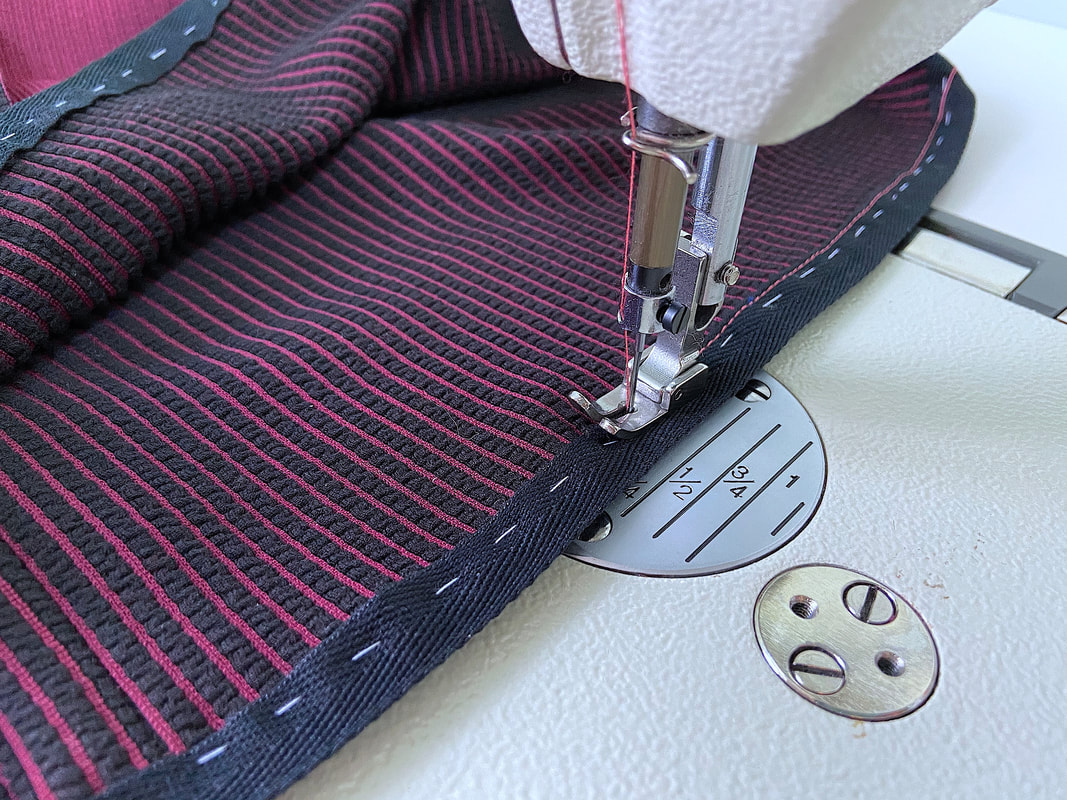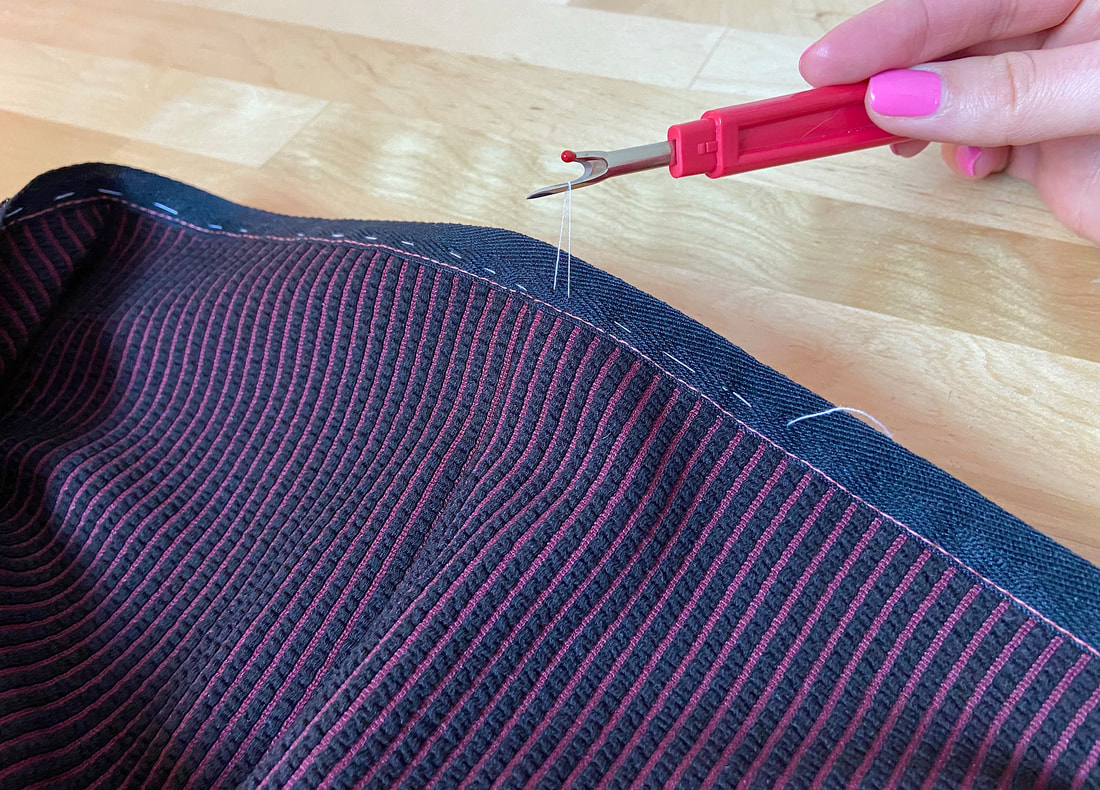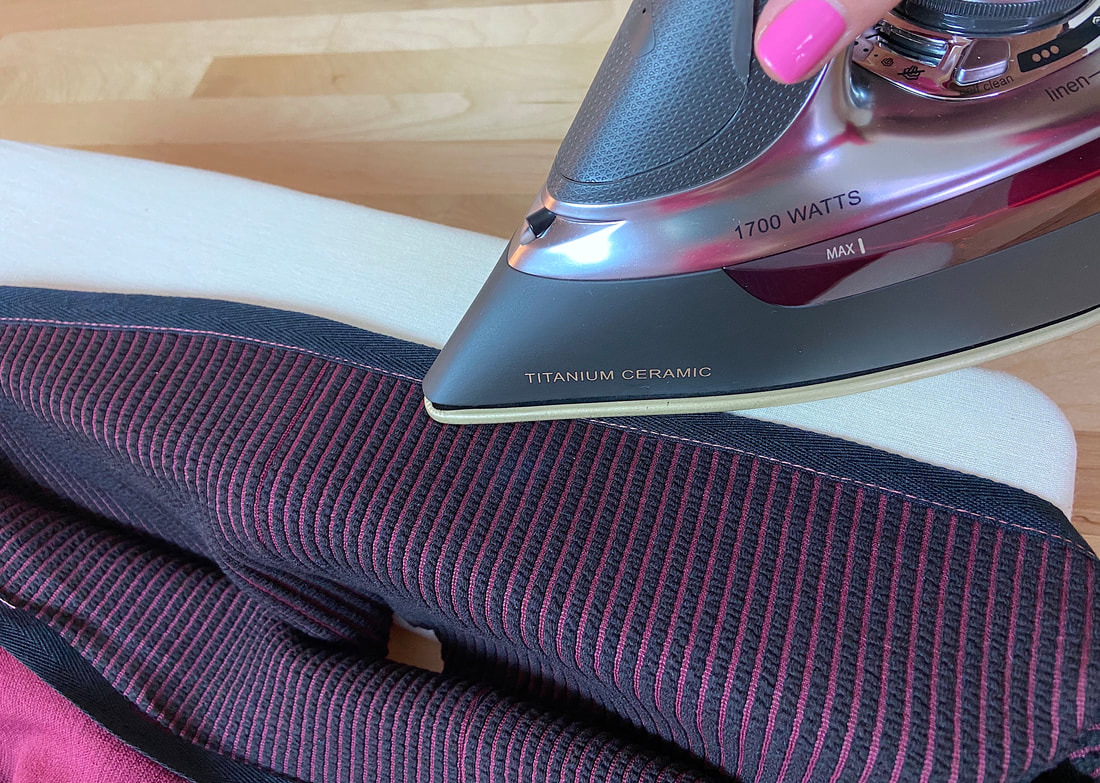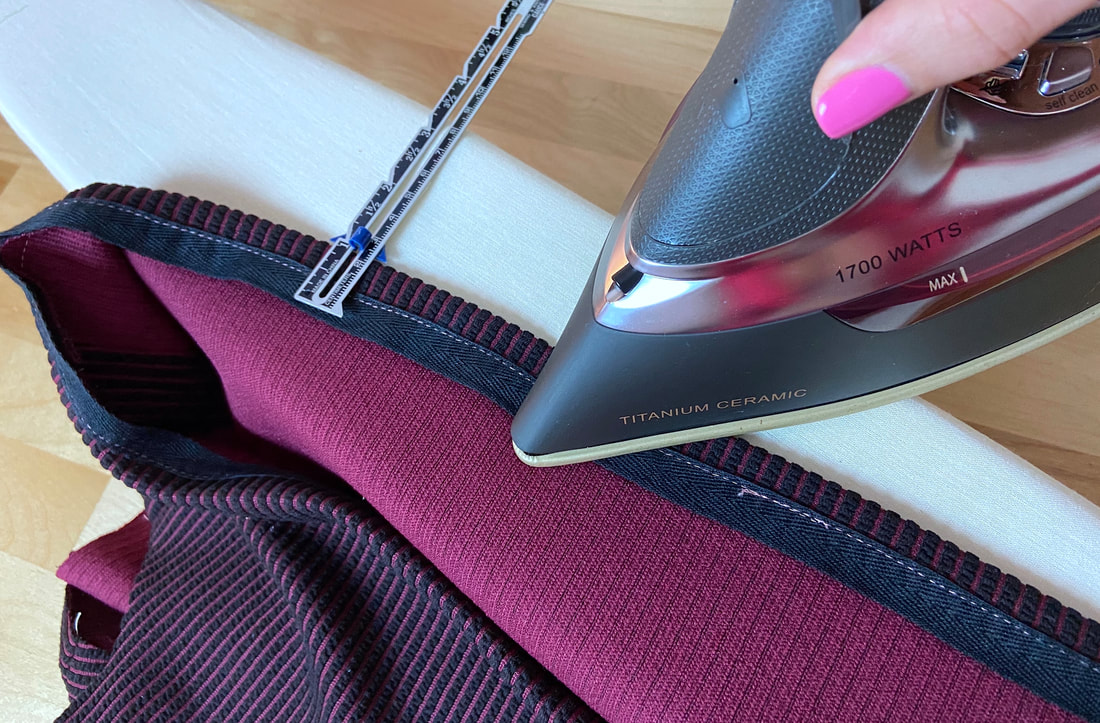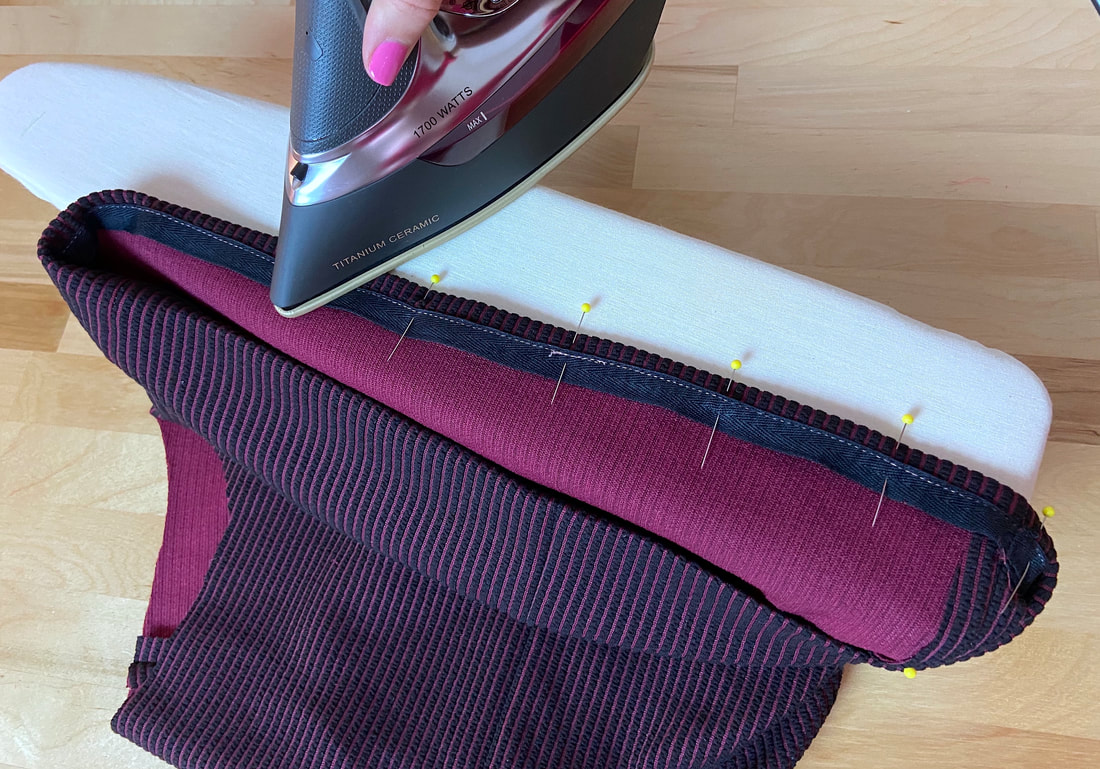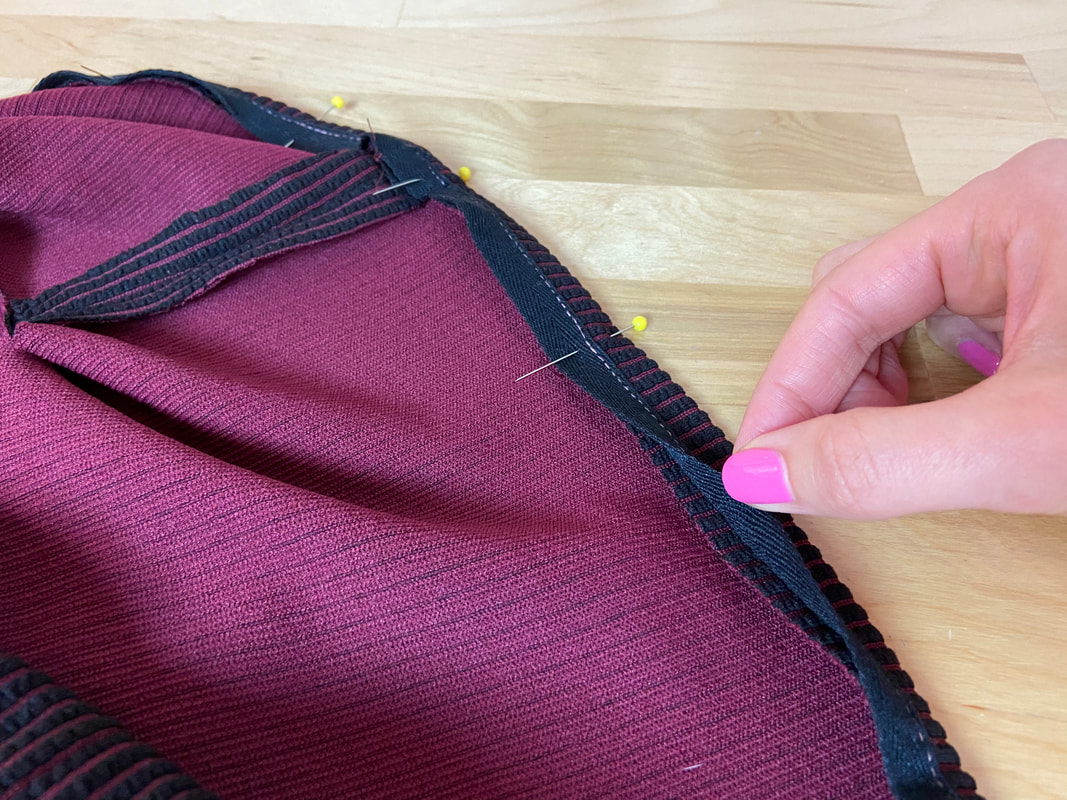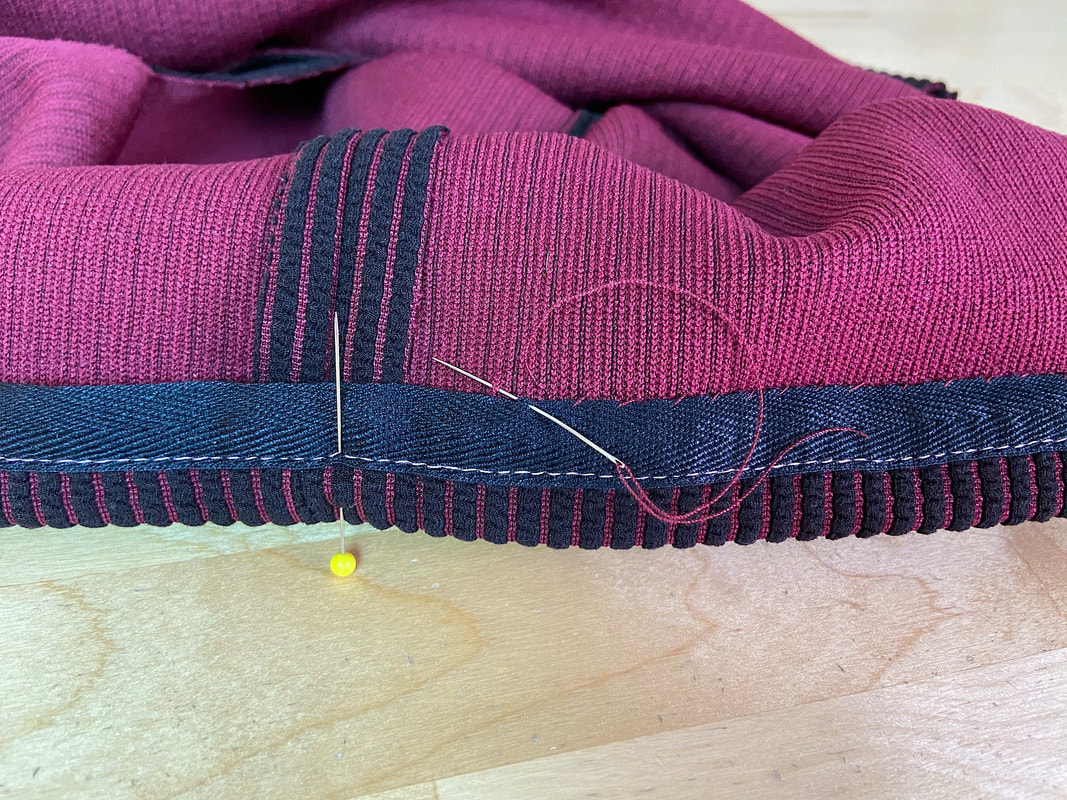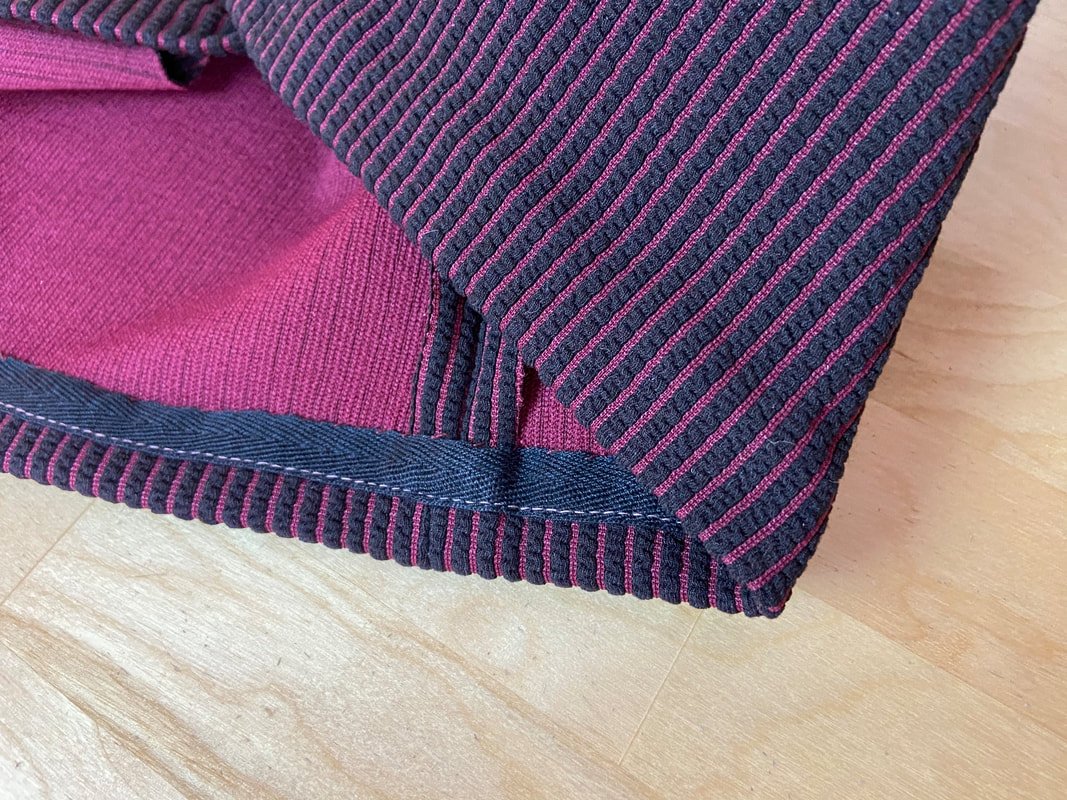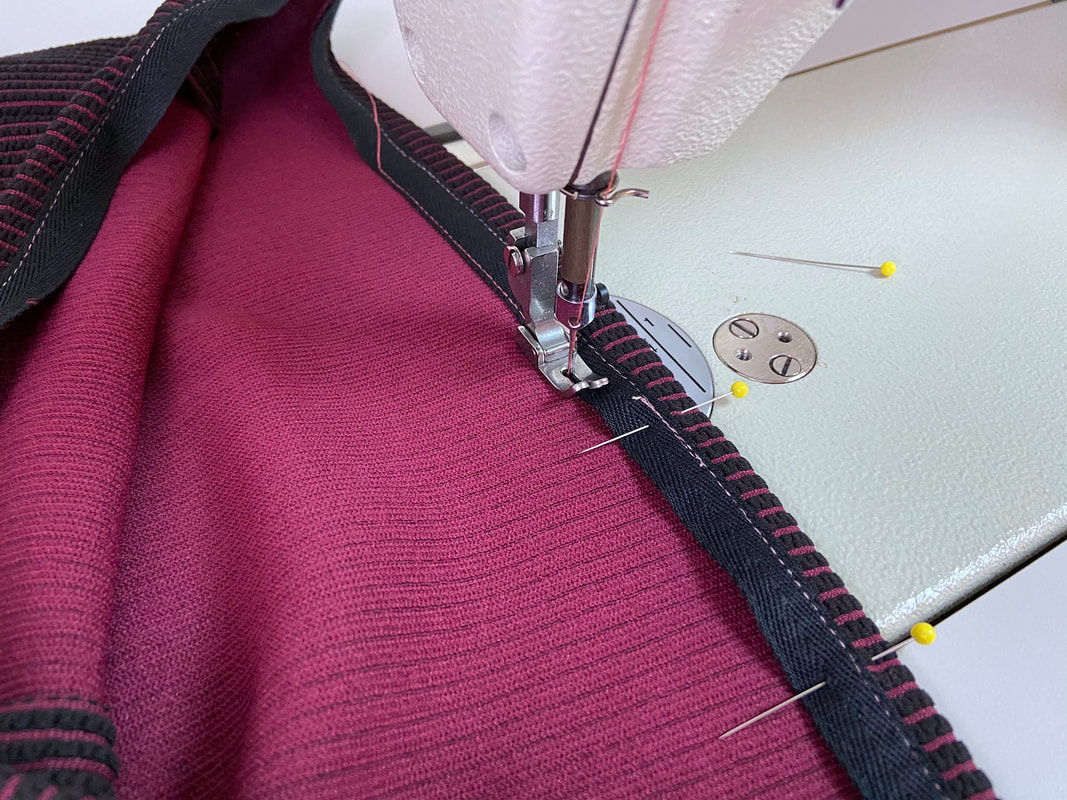A twill/ribbon hem finish is very similar in construction to a classic single folded technique. The only difference here is that the hem’s raw edge is hidden behind a strip of twill tape, ribbon or bias tape.
This technique is a great alternative for garments that have an exposed underside such as unlined jackets and styles with high-low hemlines. Not only is this hemming method highly professional, it is also very easy to apply, supporting both a hand-applied blind finish and a machine topstitch.
To complete a twill/ribbon hem finish, you will need to purchase twill or ribbon tape in the appropriate width and color. Both are available at your local fabric store either in pre-packaged form or per yard.
Twill tape is thicker and has a softer hand than ribbon. It is more appropriate for heavier garments like those made of wool and other thick, textured fabrics.
Ribbon, on the other hand, is much thinner and lighter, making it perfect for light-to-medium weight garments.
If you take a look at both the twill and ribbon tape, you will notice a linear pattern along their top and bottom lengthwise edges. These lines will provide a stitching guide when sewing the tape to the garment’s hem.
When it comes to choosing the most suitable twill/ribbon width for your project, it is important to consider the fabric’s thickness. A heavy, thick fabric will require a wider tape- ½” or more should work in this case.
For lightweight, fine fabrics, a ¼” ribbon tape is most suitable. If unsure, test a scrap of your fabric with various twill and ribbon widths. The tape should be securely attached to the hem while also effectively cover its cut edge.
In terms of color, it is best to match the twill/ribbon tape to the garment as close as you can. If you can’t find a good match, use a neutral or complementing color. You can also incorporate the ribbon/twill tape into the design by using a contrast color. While a twill tape won’t be visible on the face of the garment (unless it has a high-low hem), a color-blocked hem tape can add a unique accent to the inside of an open, unlined garment.
How To Sew A Twill/Ribbon Tape Hem Finish
1. Before attaching the tape, make sure all hem crossing seams have been fully stitched, finished and ironed in the proper direction.
With the garment on its wrong side, align the end of the twill/ribbon tape about ½” past the garment seam, placing the tape about halfway above the hem edge on the face of the fabric as shown. Insert a pin perpendicular to the edge to secure.
2. Working from the wrong side of the garment, continue aligning the garment’s hem edge to the center of the tape, inserting pins perpendicularly as shown.
3. When arriving at the starting point, trim the tape about ½” past the garment seamline. Next, fold the tape in such that the folded edge aligns with the garment seamline as shown.
4. Hand baste the twill or ribbon tape in this position to prevent the tape from slipping out of alignment in the machine stitching process.
5. Machine stitch through the top lengthwise edge of the tape catching the hem allowance underneath. For best results, follow the tape’s woven stitching guide in the process.
When complete, iron the finished tape in the direction it was stitched.
6. Fold the entire hem allowance in towards the wrong side of the garment and iron to crease the fold. In this case, the hem allowance is 1”.
The resulting fold corresponds to the garment’s finished hemline.
Note: If your hemline is not directly marked on the garment, use a ruler or a gage pointer to measure the hem allowance from the cut edge upwards and mark the line with tailor’s chalk or a fabric pencil.
7. Fold and iron the entire hemline, inserting pins perpendicular to the edge to hold the hem allowance in this finished position.
When the hem allowance is folded, the hem’s raw edge will be hidden by the twill or ribbon tape used.
At this point, you can choose to either apply a blind stitch by hand or a machine topstitch.
To hand-finish the hem: Slipstitch the unstitched edge of the tape to the garment surface. As you stitch, catch only 2-3 threads from the garment layer at a time.
There should be no visible stitching on the face of the garment.
To topstitched the hem: From the wrong side of the garment, machine stitch through the unattached lengthwise edge of the tape and garment layer underneath. Follow the tape’s edge or woven stitching as a guide.
The resulting stitch should enclose the hem’s raw edge, resulting in an even, smooth topstitch both on the wrong and right side of the garment.

